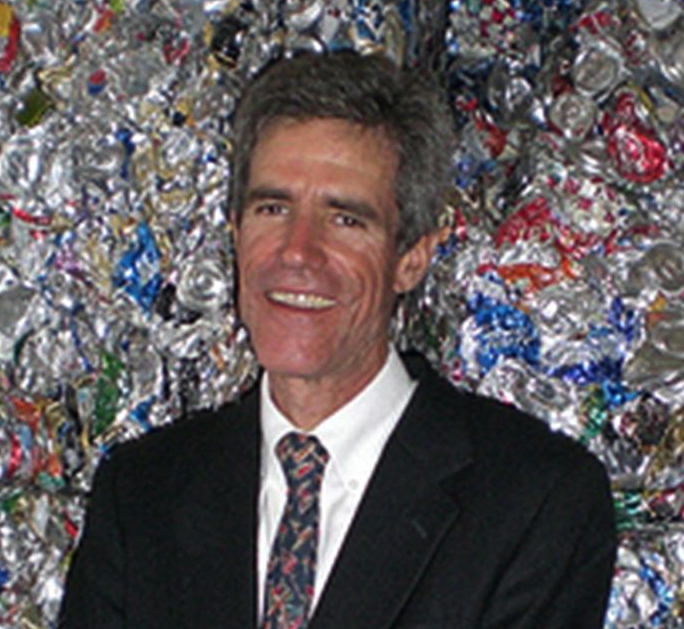
We are trying to bend that assembly line into a closed loop that circles back to make it possible to mine the urban waste stream and make useful products that people want to buy out of materials that have already been made from mines, forests, and farms.
1. What led you to the mission of being manager of the Harvard Recycling Services?
I was a student at Harvard University Graduate School of Education. I noticed that the recycling wasn’t very good back thirty years ago. It was a very paper intensive age. There was no email. No computers. Any  time you wanted to send a memo, or communicate anything with anybody, you had to print out a memo or make a flyer or send a mailing. Every time I went to the student mailbox, I would come back with fifty pieces of paper. They were in house newsletters, memos from my advisor, memos from other students, announcements of events coming up – and there was no place to recycle them.
time you wanted to send a memo, or communicate anything with anybody, you had to print out a memo or make a flyer or send a mailing. Every time I went to the student mailbox, I would come back with fifty pieces of paper. They were in house newsletters, memos from my advisor, memos from other students, announcements of events coming up – and there was no place to recycle them.
I had been a recycler in my private life. I knew there were good markets for paper. I also knew that the cost of disposal was increasing. For instance in 1983, in the city of Cambridge, Harvard University lost the opportunity to landfill its trash. The Cambridge landfill had closed. We had to contract with the vendor who hauled the trash and have it taken out of state to a landfill that was still open. The cost dramatically increased for the university.
I was saying, “This is so foolish! We are wasting a resource that could be recycled to make more office paper or pizza boxes or cereal boxes or any number of things that would be useful and we are 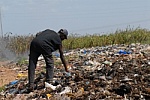 wasting an opportunity to employ people and make money for the university. We are dumping this valuable resource into a landfill that’s going to generate methane and that is going to cause (although I didn’t know at that time) green house gas. Dumping also causes water pollution.” Not recycling was a missed opportunity and an environmental hazard.
wasting an opportunity to employ people and make money for the university. We are dumping this valuable resource into a landfill that’s going to generate methane and that is going to cause (although I didn’t know at that time) green house gas. Dumping also causes water pollution.” Not recycling was a missed opportunity and an environmental hazard.
I became a gadfly on campus. I got together with other students who were distressed about this problem and we started meeting once a week for breakfast at the Kennedy School of Government. There were people from the law school, the medical school, and the business school – all the schools of Harvard. We wrote a letter as concerned students, “We don’t want to see our institution being so wasteful.” It wasn’t just about paper and other recycling; it was about energy efficiency, water use, and hazardous waste generation – the whole gamut of issues that impact the environment.
We met with the president of Harvard University. He was very impressed that such a broad coalition of students brought this issue up. Eventually he said, “If you guys are so smart – Robert if you are so smart – why don’t you help us solve the problem?” So I started working part time with the operations department and eventually it became a full time job.
The real turning point was in 1993 when in addition to promoting recycling and coordinating the student staff collection, I also got the responsibility to oversee the trash removal. That was really the key. 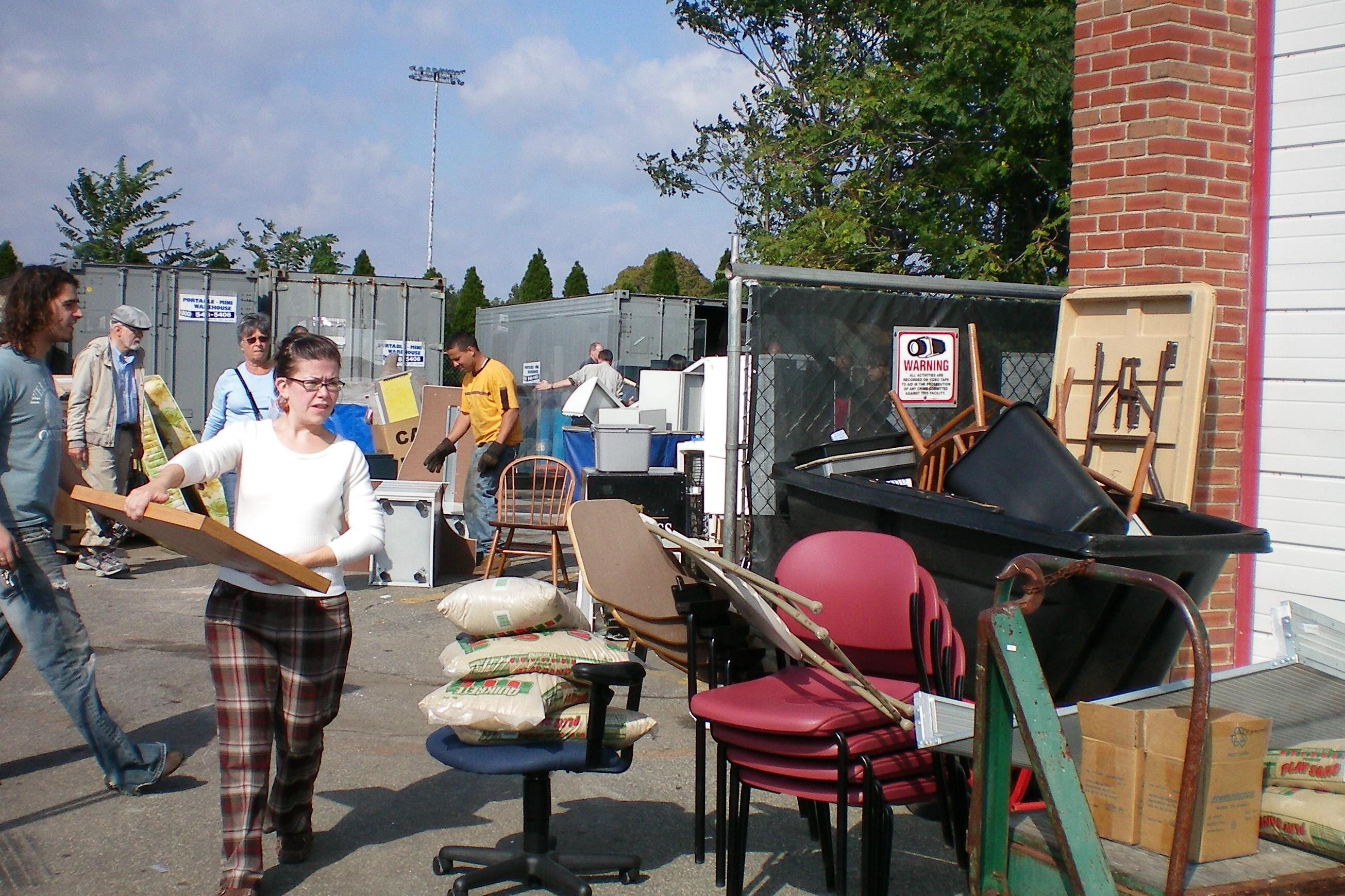 Basically, I was the fox guarding the hen house. I was able to go in and dig into that waste stream. We started pulling out useful products like computers that could be refurbished. We started a little operation with students who helped us clean up and refurbish and resell computers. I started surplus operation where once a week members of the general community could come and take surplus furniture, supplies, and equipment for free. (Pictured here.)
Basically, I was the fox guarding the hen house. I was able to go in and dig into that waste stream. We started pulling out useful products like computers that could be refurbished. We started a little operation with students who helped us clean up and refurbish and resell computers. I started surplus operation where once a week members of the general community could come and take surplus furniture, supplies, and equipment for free. (Pictured here.)
We started partnering with student charities to collect and move out books, clothes, and furniture that the students have left behind. We sell those in the fall as a fundraiser for Harvard’s Habitat for Humanity. Last year this program raised seventy two thousand dollars ($72,000). It’s the biggest yard sale in Cambridge! We had eight tons of books, about twenty two tons of clothes, and about another fifty tons of general couches, chairs, futons, mirrors, waste baskets, etcetera. It was about two hundred and fifty truckloads of goods that we were able to save.
All that material used to be discarded as trash. We work with student charities. We have to because it takes a lot of labor – about two thousand hours of volunteer labor — to sort out and clean up the goods, pack up clothes, box up the books, etcetera. The college wants to promote community service, so they gave housing and a food stipend to eight students to stay for the summer and help with the Stuff Sale. That’s what we call it – the Harvard Habitat for Humanity Stuff Sale.
We work with charity groups and nonprofits and a special needs group called LABBB, Lexington Arlington, Burlington, Bedford, and Belmont School to Work Program. They are very helpful to the Stuff Sale. In fact, they do a better job than Harvard students at things  like bundling up hangers. We get a huge jumble of hangers – probably about fifteen cubic yards of hangers. They are all jumbled in bags and tangled together. Some are wood. Some are wire. Some are plastic. Some are velvet. These kids actually use futons that they stand on end (the metal frames) and they have the plastic hangers in one place, the wood ones in another, and the metal ones over in another place. They bundle hangers up in packs of ten. When they are all neatly bundled up in the bin boxes, they just fly out of the sale.
like bundling up hangers. We get a huge jumble of hangers – probably about fifteen cubic yards of hangers. They are all jumbled in bags and tangled together. Some are wood. Some are wire. Some are plastic. Some are velvet. These kids actually use futons that they stand on end (the metal frames) and they have the plastic hangers in one place, the wood ones in another, and the metal ones over in another place. They bundle hangers up in packs of ten. When they are all neatly bundled up in the bin boxes, they just fly out of the sale.
They also test batteries. About a quarter of the batteries we get for recycling are perfectly good. They still have a strong charge. There are policies in the audio visual departments where every single time they send out a monitor and a laptop and remote control for a professor to use in a lecture, the batteries are changed whether they are used up or not. It’s just too high a price to pay to have an auditorium full of students ready to hear a lecture and the professor goes to show the first slide and can’t because of a dead battery.
So they made it a protocol to take a brand new battery and put it into the remote – every single time. They take the old ones out and  put them in a bucket. One in four of those batteries still has a strong charge. They bundle up the good ones and sell them for ten cents a piece at the Stuff Sale. Once they are bagged up in little heat sealed bags, they fly out of the sale too! Instead of becoming a hazardous waste that is going to leach nickel, zinc, and manganese into the ground water from the landfill, we get a use out of these batteries. We give meaningful work to the LABBB kids and we raise money for Habitat for Humanity!
put them in a bucket. One in four of those batteries still has a strong charge. They bundle up the good ones and sell them for ten cents a piece at the Stuff Sale. Once they are bagged up in little heat sealed bags, they fly out of the sale too! Instead of becoming a hazardous waste that is going to leach nickel, zinc, and manganese into the ground water from the landfill, we get a use out of these batteries. We give meaningful work to the LABBB kids and we raise money for Habitat for Humanity!
There is still so much waste. In Haiti during the earthquake (about two and a half years ago), we had already made connections with Haitian charity groups that come to our surplus distributions. Out of their own pocket, they funded renting an overseas shipping container and loaded it up to go to Haiti. Most of the groups are affiliated with the Port of Prince Roman Catholic Archdiocese. After the earthquake, they had over four hundred thousand homeless people and people injured and maimed – so many people who needed everything from pots and pans to a mattress to sleep on to – anything you have to have to supply your house. The need is just unbelievable.
They have sent from Harvard four overseas shipping container loads of goods to Haiti. We’ve also worked with groups from Uganda, 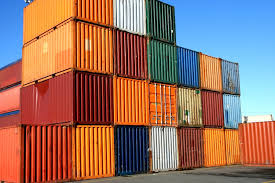 Liberia, Ghana, and Honduras. There are a lot of people who are Central American natives who come to recycle the metal we have such as scrap metal. Their favorite thing is useful commodities they can ship. One all time favorite is mini fridges. Another favorite is linens – sheets, towels, spreads, and blankets. They are either are too worn for a Harvard Residential Education Program to use or come directly from students who don’t have room in their suitcases to take them back after they leave campus. There are also pillows and so many things that are useful for people who are in great and desperate need.
Liberia, Ghana, and Honduras. There are a lot of people who are Central American natives who come to recycle the metal we have such as scrap metal. Their favorite thing is useful commodities they can ship. One all time favorite is mini fridges. Another favorite is linens – sheets, towels, spreads, and blankets. They are either are too worn for a Harvard Residential Education Program to use or come directly from students who don’t have room in their suitcases to take them back after they leave campus. There are also pillows and so many things that are useful for people who are in great and desperate need.
2. What does this mission mean to you?
I never imagined when I came to Harvard to be a student in education administration, that I would end up making connections with people and taking goods that are a nuisance to Harvard and 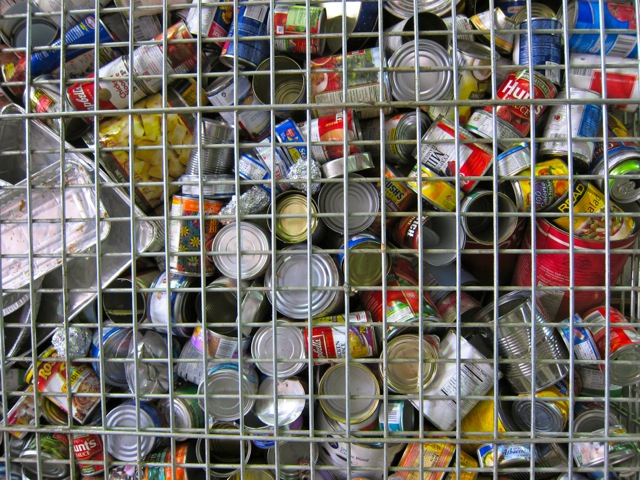 putting them in the hands of people who are so grateful to have them. It’s a wonderful feeling. You solve three problems. It’s an environmental problem. It’s a social problem. It’s a financial problem. If Harvard weren’t able to find recipients for these goods, they would have to pay $92.00 a ton to landfill material.
putting them in the hands of people who are so grateful to have them. It’s a wonderful feeling. You solve three problems. It’s an environmental problem. It’s a social problem. It’s a financial problem. If Harvard weren’t able to find recipients for these goods, they would have to pay $92.00 a ton to landfill material.
There is a cost to recovering and storing and staging these goods. A lot of times we have to pick them up. Sometimes there are professional drivers who drive and maintain trucks and we have to use pallets and dollies. There is cost overhead, but at the same time it is so much better to recover these goods for recycling and not send them off to a landfill. It’s an extremely gratifying mission. It really is.
3. What was your best day as manager of the Harvard Recycling Services?
I remember a really good day. I’m not sure it was really my best day, but it was just a really good day. Working with nonprofit  groups, it is complicated to work out timing and logistics. They usually have to get a truck, hire labor to load the truck, get approval and authorization to receive the goods. At Harvard someone has to declare the goods as surplus, we have to recover them in a timely way, and we have to keep them sheltered from the rain. There are about nine things that have to happen.
groups, it is complicated to work out timing and logistics. They usually have to get a truck, hire labor to load the truck, get approval and authorization to receive the goods. At Harvard someone has to declare the goods as surplus, we have to recover them in a timely way, and we have to keep them sheltered from the rain. There are about nine things that have to happen.
There was one day this past fall when it was the first day that the LABBB students came to our new facility. We had to keep them off campus for a couple of months because we had to move from one warehouse to another. It wasn’t even clear if we would be able to use them in the new place. But we did get approval.
The day I let them in to the new warehouse, there were two guys who walked in so fast and with big beaming smiles on their faces. This was meaningful work for them. They didn’t see my side of it – that they were rescuing these high technology products that contained toxic materials. If the materials are improperly disposed of or discarded, the result is unnecessary pollution.
I saw them go in with such zest and gusto. At the same time there was someone coming in to buy the computers that they had helped refurbish. I was going to go outside to help a Haitian group. They had come with a truck to load up some bed frames we had just received.
I was thinking, “Wow! This is such a great moment! I was able to  help all of these people get things they need – whether it is meaningful work, or beds for Haiti, or income from the sale of refurbished computers, or diverting materials from the landfill and preventing waste disposal.” I had been able to get all these things lined up with four or five different groups of people. I was thinking, “This one moment! This is a great job!”
help all of these people get things they need – whether it is meaningful work, or beds for Haiti, or income from the sale of refurbished computers, or diverting materials from the landfill and preventing waste disposal.” I had been able to get all these things lined up with four or five different groups of people. I was thinking, “This one moment! This is a great job!”
4. What was your worst day as manager of the Harvard Recycling Services?
One of the first Move-Outs on the job, I was walking around the campus checking on the various removal crews sweeping the student dormitories. We are under a lot of pressure at that time of year to keep the campus looking good, as there are parents, alumni and other distinguished visitors around. So during those years, if a student set something in the trash area, we had to landfill it. One of our departing students had put a beautiful sleep sofa out next to the trash dumpster, probably worth about $800. If that happened now, I would have one of our box truck crews pick it up to give to Harvard Habitat for Humanity for their Stuff Sale.
Another student could have bought it and used it for several years, not only furnishing their apartment with it, but also raising money for Habitat and keeping the sofa out of the landfill. But we didn’t have the infrastructure to handle it then. So I helped the driver feed the gorgeously upholstered, heavy and fully functional sofa into the rear-load trash compactor truck and listened with intense frustration as the packer blade “broke the back” of the beautiful piece of furniture. The seat cushions splashed into the liquid swill on the bottom of the hopper. What a waste! In those years, we typically discarded about 300 tons during the May move-out period. Now we discard less than 50 tons. But it took us about 10 years before we could build up the staffing, space and service infrastructure to properly salvage the Move-out avalanche.
5. How did you survive your worst day?
I’ve been at this job for twenty-three years. I think we’ve been through a lot of hard times and there have been times when we 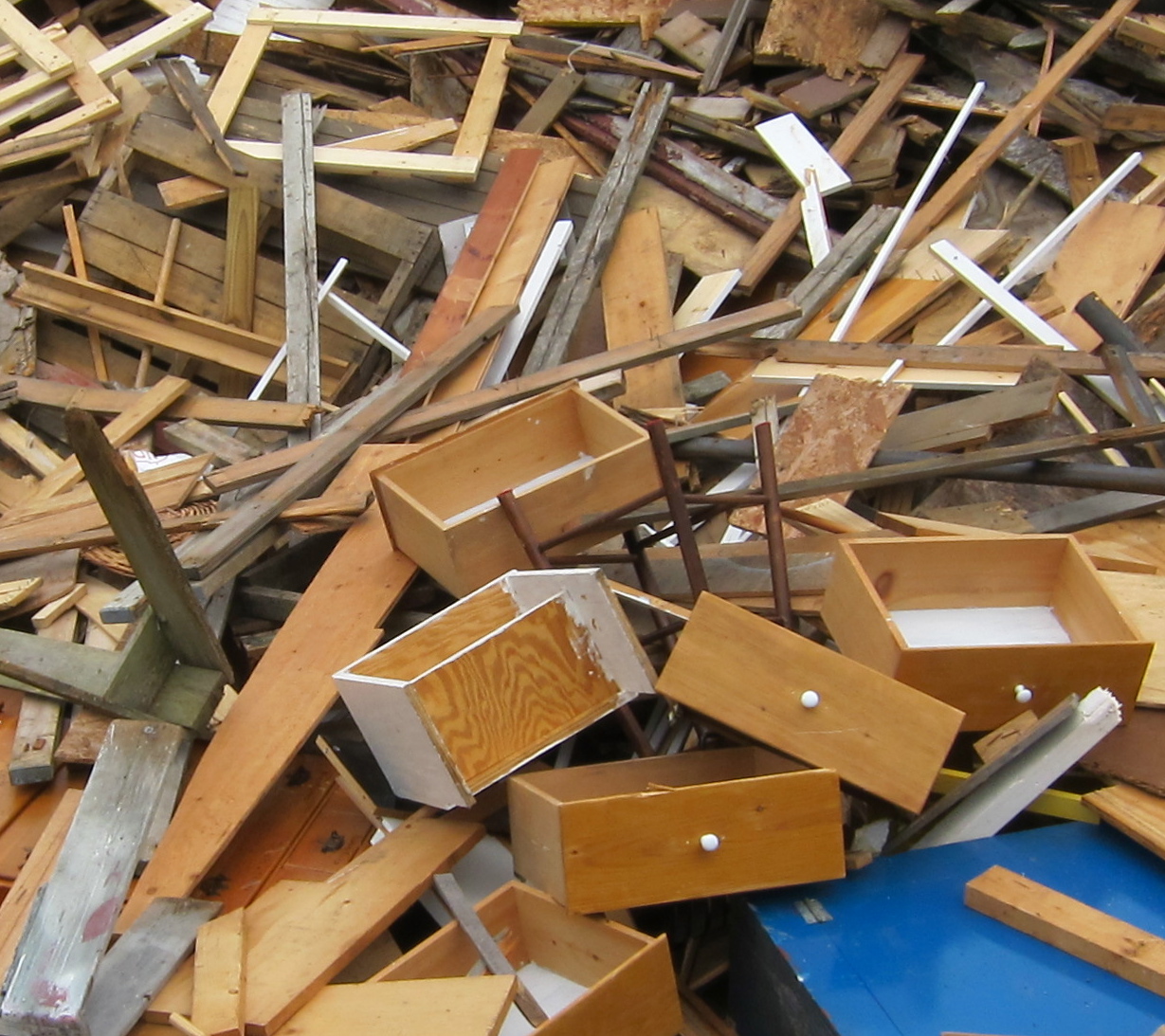 thought we might have to close some part of the program — like computer repair. There were times when I watched a hundred dumpsters filled with perfectly useful furniture get hauled to the landfill because we didn’t have the infrastructure to recover it. I think of other bad things that have happened and then I look at the big picture.
thought we might have to close some part of the program — like computer repair. There were times when I watched a hundred dumpsters filled with perfectly useful furniture get hauled to the landfill because we didn’t have the infrastructure to recover it. I think of other bad things that have happened and then I look at the big picture.
My vision has always been, “I want to generate the least waste and extract the best and highest end use for all the material goods that 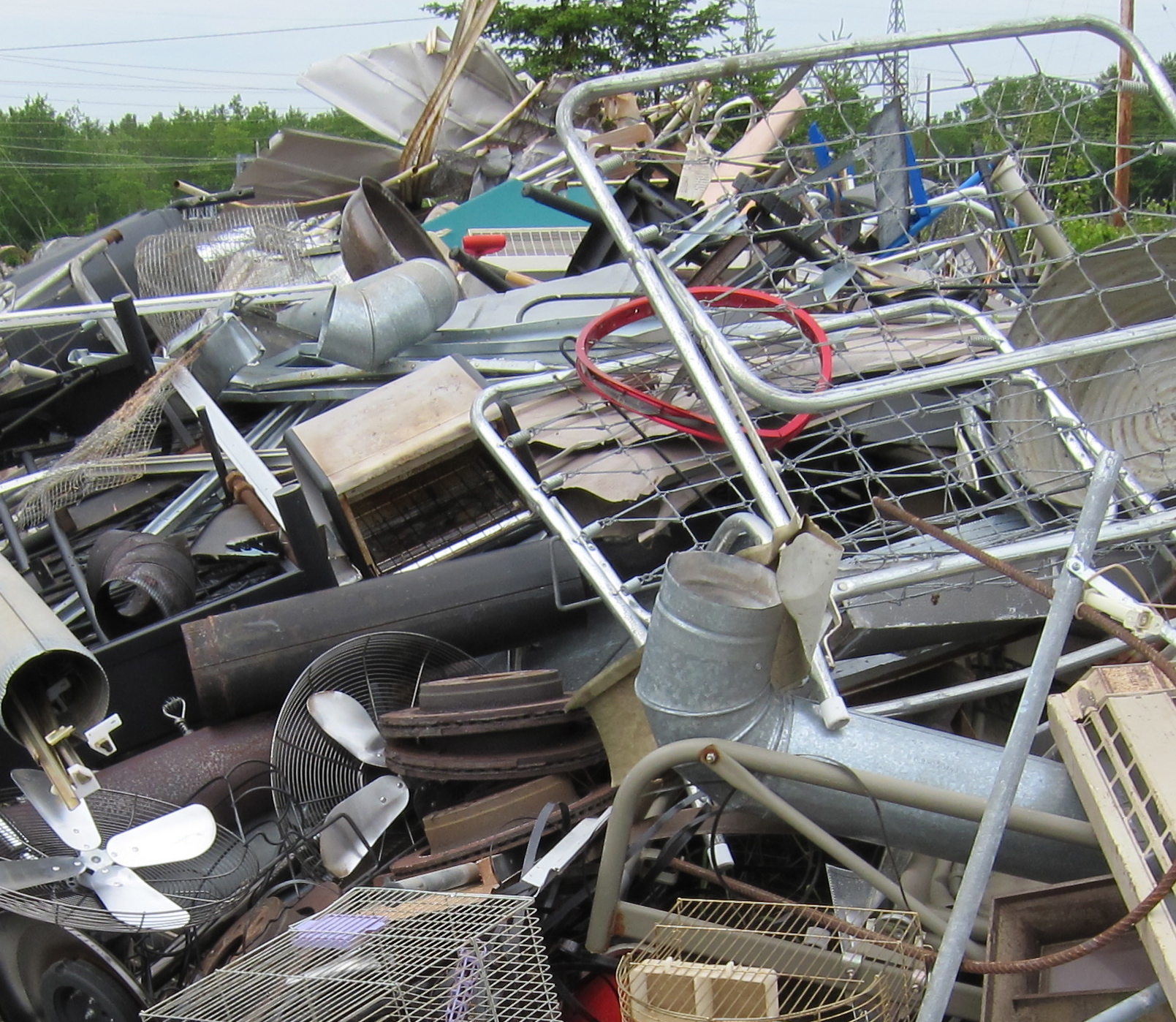 we handle.” That’s something that everybody can go along with. If someone is against our model I might ask, “ Do you think we should be wasteful?” The answer would be, “No, I didn’t mean to say that you should be wasteful!” Well. That’s all we are trying to do: be thrifty and get the best value for all our resources – material or human.
we handle.” That’s something that everybody can go along with. If someone is against our model I might ask, “ Do you think we should be wasteful?” The answer would be, “No, I didn’t mean to say that you should be wasteful!” Well. That’s all we are trying to do: be thrifty and get the best value for all our resources – material or human.
We do our best. It’s a hard road because our industrial economy is set up in an assembly line model. We extract the resources out of the mines, forests, and farms. They are processed and packaged and sent to a store. When they are used up, they become landfill. It’s not a sustainable model. We are trying to bend that assembly line into a closed loop that circles back to make it possible to mine the urban waste stream and make useful products that people want to buy out of materials that have already been made from mines, forests, and farms.
I think of all the tough challenges we have had to overcome. You do have to have faith. You also have to keep this principle in mind that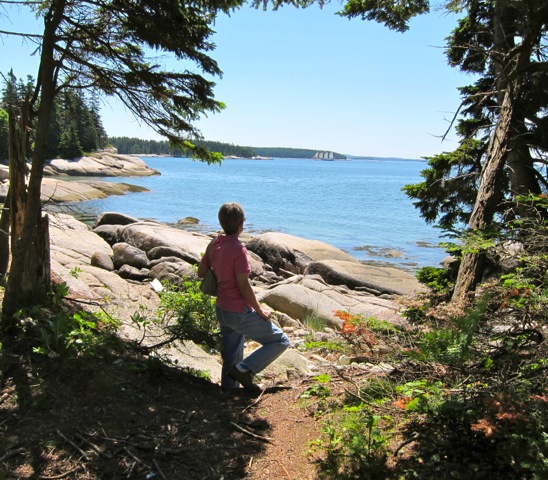 we only have planet earth and this beautiful creation and it has everything we need. If we don’t take good care of it, we are really doing a bad thing not only for us, but also for future generations. I think deep down, everybody understands that. So if we stick to that big picture principle, we’ll get through it. (That’s what I tell myself and should write that down and put it on my office wall.)
we only have planet earth and this beautiful creation and it has everything we need. If we don’t take good care of it, we are really doing a bad thing not only for us, but also for future generations. I think deep down, everybody understands that. So if we stick to that big picture principle, we’ll get through it. (That’s what I tell myself and should write that down and put it on my office wall.)
This creation we have is unique in the universe – that we know. Everyone loves to see a beautiful green vista. Everyone is completely charmed by animals and all these fellow species that are here on the planet with us. Everyone is completely nourished and gratified by good food. The thing that is consistent with all of this is the part of taking care of the environment. It’s not only a matter of avoiding pollution, but it’s also a matter thriving health.
As we move towards those ideals, we are going to take a step towards not only avoiding toxicity and pollution, we are going to take big giant steps towards happiness, and health, and peace. I don’t have a book about this, but a bimonthly newsletter that talks about this in the context of recycling at Harvard.
- « Previous person: Paige Blaker
- » Next person: Tina Scheer